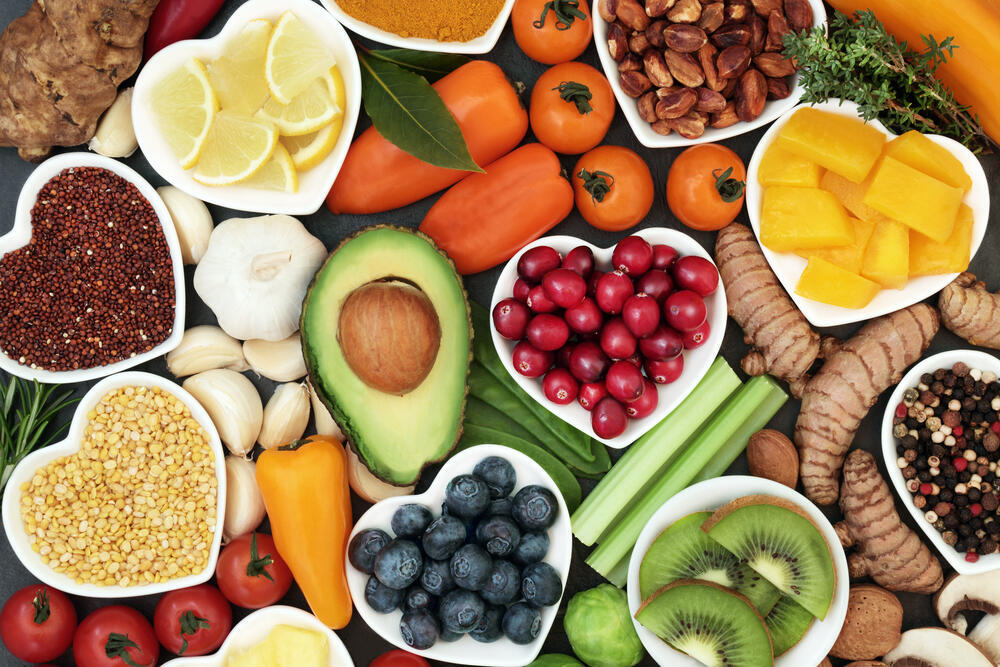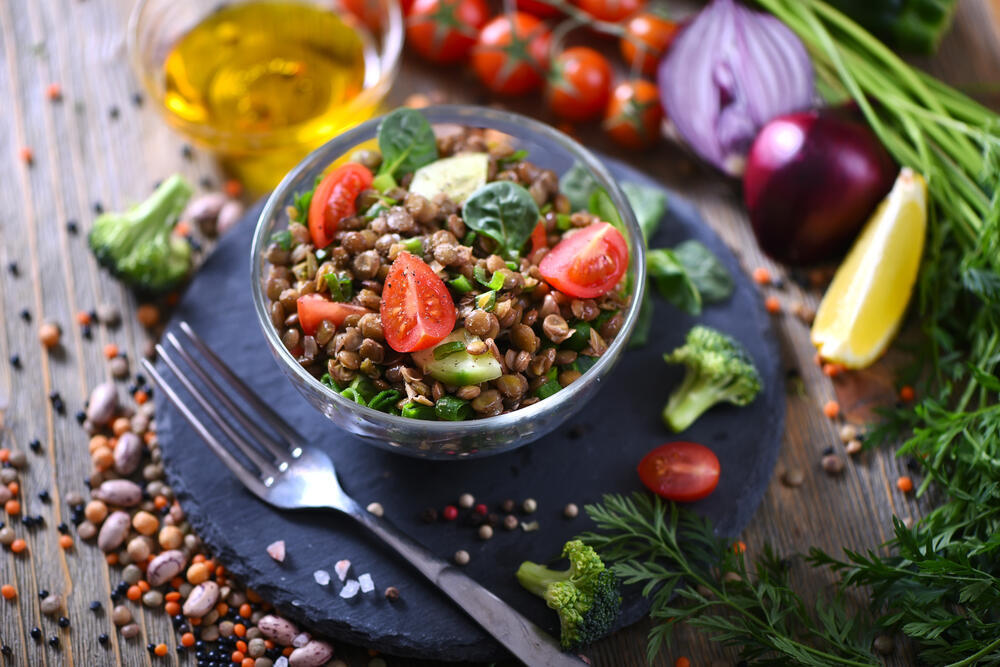Getting your Trinity Audio player ready...
Carbohydrates, fats and proteins are just some of the essential building blocks our bodies need for survival, growth, physical activity, thinking, digestion and sleep. We see them on our plates in a nearly tangible form. However, our bodies also need vitamins and minerals. These come to us as an integral part of our food, often in quantities too small to notice. For example, when we eat an apple we taste the sweetness of the sugar and the juiciness of the water, but we can't detect the vitamin C or the potassium present in it.
Often, because our diet isn't always balanced for various reasons, we diagnose deficiencies in vitamins and minerals through tests and symptoms. The range of nutritional supplements available today is vast and accessible to everyone. Every company tries to assure us that their supplement will fill an unknown gap or compensate for poor diet or intense physical activity, and therefore it's recommended to take various supplements. It's important to note that taking nutritional supplements is not a substitute for a balanced diet. The health benefit of taking supplements is only in situations where there is evidence or a real fear of a deficiency of a specific vitamin or mineral.
Minerals are natural components found in the soil and drinking water. We get minerals through our food, either from plant or animal sources. When the diet or drinking water of the "food we eat" is deficient, our nutrition is also deficient. For example, if our vegetables are irrigated with mineral-poor water or the animals we consume were raised on poor-quality food, the produce also will be lacking. Although there is strict monitoring in the country, not all our food comes from domestic or well-regulated sources.
Minerals are not affected by cooking, freezing, stir-frying or cutting and are not destroyed in these processes. Some come to us in different chemical forms that can change their absorption in our bodies, like iron. Some minerals, like potassium, leach out of vegetables into cooking water and others, like calcium, should be consumed away from other minerals to improve absorption. What happens in the case of magnesium deficiency?
Iron: A Crucial Mineral
Iron is essential for the proper functioning of the human body. It is part of hemoglobin molecules in red blood cells and plays a role in transporting oxygen to all body tissues. It is also crucial in building DNA, growth processes, the immune system, and more. As a natural mineral, iron can appear in more than one chemical form. The chemical form in which iron is found in various foods affects its absorption in the body.
The absorption process mainly occurs in the duodenum (the first part of the small intestine). Unfortunately, most iron in the Western diet is in a form that is harder to absorb. An average person absorbs 1-2 mg of iron from food, with absorption varying in certain conditions such as pregnancy, iron deficiency, iron overload and bowel diseases.
The most readily available and efficiently absorbed iron is found in animal sources such as beef, turkey, chicken, fish and eggs. However, sufficient iron also can be obtained from a plant-based diet. To achieve this, it's advisable to include iron-rich foods such as various legumes (lentils, peas, chickpeas, white beans, soy), nuts, tahini, quinoa, broccoli and dried fruits. To enhance the absorption of plant-based iron, it's recommended to consume these foods with vitamin C-rich foods like red pepper, tomatoes (for example, with fish in chraime), citrus fruits, kiwi, strawberries and cabbage.
Iron absorption Issues
In cases of absorption problems, anemia can develop, which has long become a global issue. Compared to deficiencies of other vitamins and minerals, iron deficiency ranks first as the most common mineral deficiency.
While anemia may not develop quickly, its effects can be long-lasting. In infants and children, for example, it can impact cognitive development, behavior patterns, growth and the immune system. Symptoms of anemia include fatigue, feeling cold, hair loss and paleness. Therefore, it's crucial to consume an iron-rich diet and adhere to medical guidelines for blood tests.
The causes of anemia are diverse and include poor iron intake, lifestyle habits, genetics and various diseases. Anemia can occur at any stage of life, but certain populations are more vulnerable, including women of childbearing age, pregnant women, infants, children, and vegans and vegetarians.
Iodine
Almost everyone remembers a time when they fell, got scratched, and iodine was quickly applied to the wound. The substance "iodine" is actually a chemical element that plays a crucial role in our body's systems. It serves as a basic component for hormones produced by the thyroid gland, which regulate many bodily functions.
When iodine is deficient, issues with thyroid gland activity can arise. A lack of thyroid hormones can lead to problems in regulating the body's energy, heat and the proper functioning of the brain, muscles and other organs. During pregnancy and breastfeeding, iodine deficiency can impair the development of the fetus and the breastfeeding infant, particularly affecting cognitive development and growth.
We are supposed to obtain iodine from our diet and drinking water. It is found in large quantities in seafood, such as fish and seaweed. It is also present in dairy products and eggs, as well as in iodine-enriched salt.
So why is there a deficiency?
Despite the proximity to the Mediterranean Sea and the assumption that a Mediterranean diet is sufficiently rich in iodine, a recent Health Ministry survey revealed a high prevalence of iodine deficiency among children and pregnant women. For the first time, it has been suggested that most Israelis, both adults and children, do not consume enough iodine. The best and easiest way to prevent iodine deficiency and its associated health risks is to replace household table salt with iodine-enriched salt, without increasing our overall salt consumption.
Groups at greater risk for iodine deficiency include:
- Those whose diet does not include eggs, fish, seaweed and dairy products (e.g., vegans, individuals with milk allergies, etc.)
- Women planning pregnancy
- Pregnant women
- Breastfeeding women or women who have had frequent pregnancies and births
Calcium
One of calcium's most important roles is building bone and teeth mass. It is essential to know that our bone mass strength is determined by the ages of 20-25, after which the body mainly maintains the existing mass. Factors that help preserve bone mass over the years and prevent the development of osteoporosis include dietary calcium, bone-building physical activity and hormonal status. Calcium supplementation alone is not a method to strengthen bone mass, as genetics significantly influence bone mass. Men and women with a family history of osteoporosis should be under medical supervision.
Calcium sources in the diet are diverse. Some plant-based foods are fortified with calcium and vitamin D by manufacturers, leading to variations between products within the same series. Therefore, it is important to read food labels to verify this information. Top calcium-rich foods include: seitan, fortified milk, fortified soy drinks, yogurt, white cheese, hard cheese and white beans.
Factors inhibiting calcium absorption include phytic acid found in bran, whole grains and nuts; oxalic acid found in cauliflower, spinach, beet leaves, cocoa, caffeine, tea, cocoa and minerals like iron and zinc, especially in supplements.
Throughout life, a healthy body maintains a constant blood calcium level of 8.5-10.5 mg/dl to support vital processes such as muscle contraction and relaxation, nerve signal transmission, bone and teeth formation, blood clotting and various metabolic processes. There is no easy way to know if there is a calcium deficiency because blood calcium levels remain constant even in deficiency and excess situations. Changes in blood calcium levels are usually the result of various health conditions.
In different life situations, such as pregnancy, breastfeeding, menopause, intense physical activity, sharp weight changes, selective eating, etc., it is recommended to consult a clinical dietitian for personalized recommendations regarding calcium dosage and other nutritional components to meet special needs.
Magnesium
Magnesium is a mineral involved in many processes in our body: bone building, energy production, muscle activity and various anabolic and catabolic processes. Magnesium is an intracellular mineral, so its blood levels do not always accurately reflect its status in the body, as only about 1% of total body magnesium is present in the blood. Therefore, a blood test might appear normal while there is an actual deficiency.
 Michal SukmanPhoto: Michal Sukman
Michal SukmanPhoto: Michal SukmanMagnesium deficiency can cause various symptoms such as fatigue, loss of appetite, nausea, and vomiting. In severe deficiency, muscle cramps in the limbs and face, mood disturbances, and concentration issues may occur.
It is possible to obtain sufficient magnesium through diet, but it is essential to consume foods rich in magnesium. Dietary sources of magnesium include: artichokes, leafy green vegetables like spinach, parsley, and dill, whole grains such as buckwheat, bulgur, quinoa, whole wheat, and oat bran, legumes like beans, fava beans, peas and soybeans, fish, plant-based fats like sesame and nuts and beef.
On the other hand, many foods interfere with magnesium absorption, so it is not recommended to consume them alongside magnesium-rich foods: dairy products and calcium-rich foods (such as calcium-fortified tofu), beet leaves, cocoa products and chocolate, and caffeine found in coffee, tea (including green tea), cola, and energy drinks.
Potassium
Potassium also plays an essential role in the proper functioning of nerve and muscle cells and heart function. It is also involved in balancing fluids and electrolytes along with other minerals. Its importance is also noted in lowering high blood pressure levels. Many studies have pointed to a connection between a potassium-rich diet in childhood and a reduced incidence of cardiovascular diseases in adulthood.
Foods rich in potassium are similar to those rich in magnesium. These include legumes, whole wheat and its products, potatoes, tomatoes, carrots, celery, nuts, cocoa, citrus fruits, bananas, cherimoya, kiwi, apricots, melons, dried fruits, beef, poultry and fish. Potassium levels in the body depend on proper kidney function. In healthy individuals, we want to increase potassium intake in the daily diet. However, in any deviation and increase in values, it is important to seek urgent medical advice.
So, what should we eat and with what?
The rule is simple: a diet based on a Mediterranean menu, rich in vegetables and unprocessed foods, will provide most of us with all we need. Even if we drink coffee after a meal and slightly reduce mineral absorption, we will make up for it in the next meal.
- Michal Sukman is a clinical dietician at Maccabi Health Services




